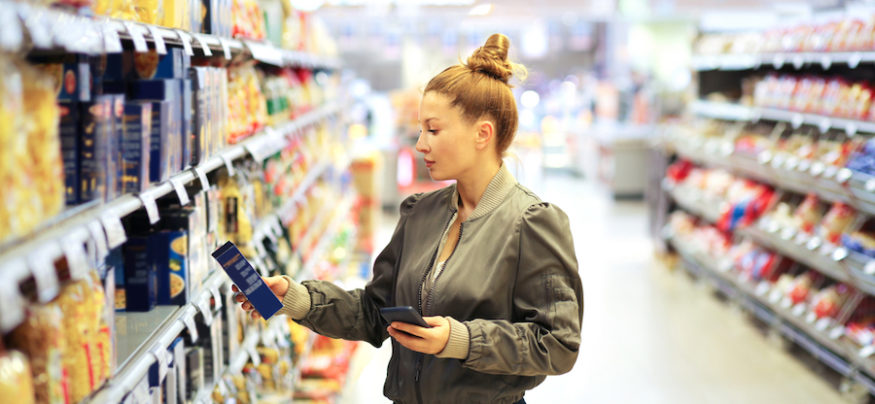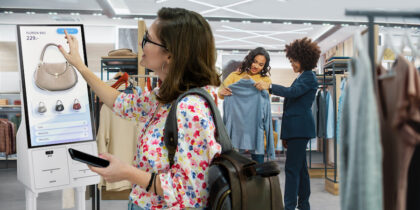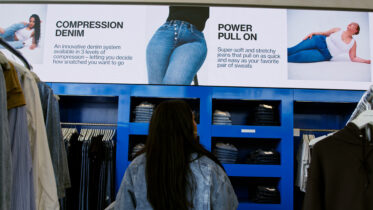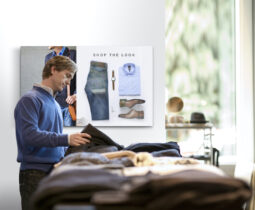Retail associates are central to customer experience, so it’s only logical to equip them with technology that will elevate their abilities — and that technology is not a single-function device.
While consumers enter the store armed with smartphones that give them access to almost everything they need to make an informed purchase decision, associates often meet them wielding nothing but a single-purpose scangun. They must hound a colleague or access a terminal to find the information they need to convert interest into a sale. That’s why 83 percent of consumers believe they are more knowledgeable than retail associates — and nearly 50 percent of associates agree. Many shoppers deliberately avoid them.
The result is a massive missed opportunity for many retailers. According to IHL, retailers that equip associates with mobile devices for accessorizing, endless aisle, clienteling and inventory management have delivered an average of 72 percent higher sales growth over those that cling to the tech-free status quo. On top of that, retailers using associate mobile for POS saw 92 percent higher sales growth. In a 2018 white paper entitled “Prime Challenge – How Amazon Prime Has Changed Retailing,” IHL reported that retail leaders are empowering associates with better tools at a rate 71 percent higher than average retailers in their segment.
Why Mobile is a Must
But what’s a “better tool?” The fact is, the choice of device is critically important to transforming the store experience. Even three years ago, no one would have predicted that picking merchandise for Buy-Online-Pickup-In-Store (BOPIS) orders would become a big part of the retail associate role. Smart devices with fast processors and user-friendly interfaces make that process quick and efficient. As BOPIS began its sharp trajectory, retailers already embracing associate mobility were well positioned to respond.
The next few years are likely to bring similar, unplanned opportunities, and retailers must be ready.
Transform Retail Associate Performance
Get your free guide to empowering retail associates with mobile devices and data. Download Now
But many are heading into the era of the digitally enabled store with older, limited mobile technology. According to BRP’s “Special Report: The State of Store Technology,” only 34 percent of retailers are using mobile customer engagement devices that are less than two years old. Many are nursing older, long-outdated tech: 18 percent have devices that are three to five years old, and another 14 percent are still using the equipment they bought six to eight long years ago.
You know what many of those devices are: purpose-built, dedicated scanguns used to maintain inventory and create orders — equipment that could very well have been used by the grandparents of today’s younger retail associates. Those devices scan barcodes and run alphanumeric inventory apps really well. But what they can’t do is help customers with accessorizing, endless aisle, clienteling, POS — all the things early adopters are doing to drive such stellar sales results.
By continuing to allocate budget to maintaining and replacing devices in that outdated fleet, some retailers are actively investing in the very paradigms that cause customers to avoid store associates.
Making Associates Part of Omnichannel
When retailers put innovative retail technology into associates’ hands, they connect them to the incredible omnichannel infrastructure they’ve built. In the eyes of the shopper, the associate becomes a resource instead of an irritant.
“It’s really about putting your best people in a position to best serve customer-specific needs. When associates have the right tools and training to help with product and service offerings, that creates a positive experience for your customers,” argues IHL Prime Challenge, which identifies associate mobility as a key, proven strategy to compete with Amazon.
Advanced barcode scanning is just the beginning of associate mobility. With the right device, associates can seamlessly transition among all these essential next-gen retail capabilities:
- Assistive Selling: One strong driver of a consumer store visit is to get answers that are difficult to get on their own. A smart device puts those answers at the associate’s fingertips by enabling the following:
- Product expertise: specs, demos, configuration tools, rich media presentations
- Clienteling: personalization on loyalty status, past purchases, search activity, preferences
- Locating inventory: finding a size, color or model in the store or network; accessing endless aisle for extended sizes, accessories and related products
- Order Management: Associates can place special orders, arrange delivery to any location, set up installation and get warranty sign-offs.
- POS: Queues are a massive deterrent. For a consumer, knowing you can get in and out quickly is a key decision point in choosing to visit a store. Not only can a retailer attract more buyers to the store, but they can complete a transaction at the moment the shopper makes a buying decision, preventing changed minds and lost sales. It also saves money. According to BRP’s 2019 POS/Customer Engagement Survey of top North American retailers, “Mobile POS lowers the overall cost of ownership by eliminating or minimizing the need for ‘big iron’ (a thick-client cash register) at store-level and virtually eliminating annual hardware maintenance fees.”
- Workflow: By putting a smart device in every associate’s hand, retailers are providing unfettered access to apps and data so associates can seamlessly transition from selling to operations tasks: managing inventory, picking BOPIS or ship-from-store orders, checking planograms, engaging with multimedia training content and communicating with team members.
Mobile Math
Putting a mobile device in the hands of every associate transforms the economics of the store floor in three ways.
- Associate mobility transforms consumers’ perception of associates.
- 94 percent of buyers tend to buy more when they have live interactions with a knowledgeable employee, according to TimeTrade’s 2018 report, “What Buyers Want”
- 57 percent feel they received prompt, personal service when store associates collaborate on mobile devices such as tablets and smartphones to help them
- Retail associates view mobility as enriching their ability to serve.
- 40 percent of associates say looking up inventory in-store, at other locations and online would be the biggest benefit of mobile
- 22 percent cite access to detailed product information
- 14 percent cite the ability to make price and product comparisons
- Mobile investment delivers ROI.
- In its 2018 white paper, “Retail’s Top 5 Challenges When Deploying Mobile,” IHL found 25 to 219 percent higher sales growth from using mobile on the sales floor, depending on the segment and device type.
BRP is very clear in its 2019 POS/Customer Engagement Survey: “The shift to mobile tools can dramatically enhance the shopping experience and reduce retailers’ total technology costs.” Associate mobility will rapidly become a mega trend in retail, with the greatest benefits coming to those who quickly get the right devices into associates’ hands.
Learn more about how technology is empowering the retail associate in this special episode of SBTV, or download our guide to improving retail associate performance with data and mobile devices.








